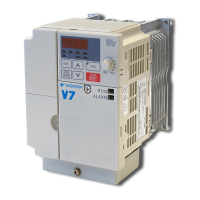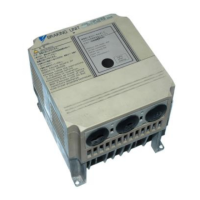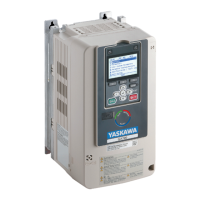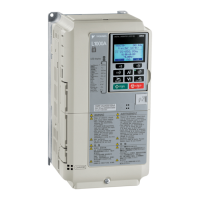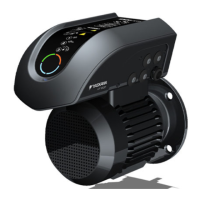65
YASKAWA AC Drive
CR700
Catalog
|
KAEP C710617 24
|
YASKA WA
Notes on Motor Operation
■
Motor Bearing Life
In applications involving constant speed over long
periods, the life of the motor bearing may be shortened.
This is called bearing electrolytic corrosion.
The installation of a zero
-
phase reactor between the
drive and motor, and the utilization of a motor with
insulated bearings are effective countermeasures. Details
can be found in the technical documentation. Contact
your Yaskawa or nearest sales representative for more
information.
Using a Standard Motor
■
Low Speed Range
There is a greater amount of
loss when operating a motor
using an drive than when
running directly from line
power. With a drive, the motor
can become quite hot due to
the poor ability to cool the
motor at low speeds. The load
torque should be reduced
accordingly at low speeds.
The gure above shows the allowable load characteristics
for a Yaskawa standard motor. A motor designed
speci cally for operation with a drive should be used
when
100% continuous torque is needed at low speeds.
■
Insulation Tolerance
Consider voltage tolerance levels and insulation in
applications with an input voltage of over
440 V or
particularly long wiring distances. Use a drive motor that
has been equipped with isolation countermeasures.
■
High Speed Operation
Problems may occur with the motor bearings and
dynamic balance in applications operating at over
60 Hz.
Contact Yaskawa for consultation.
■
Torque Characteristics
Torque characteristics differ when operating directly from
line power. The user should have a full understanding of
the load torque characteristics for the application.
■
Vibration and Shock
The motor may generate vibrations in the following
circumstances.
(
1
)
Resonance
Take particular caution when using a variable speed
drive for an application that is conventionally run
from line power at a constant speed. Shock
-
absorbing rubber should be installed around the
base of the motor and the Jump Frequency
selection should be enabled to prevent resonance.
(
2
)
Any imperfection on a rotating body increases
vibration with speed.
Caution should be taken when operating above the
motor rated speed.
(
3
)
Subsynchronous Resonance
Subsynchronous resonance may occur in applications
with high load inertia, as well as in motors with a
relatively long shaft. Yaskawa recommends using
Closed Loop Vector Control for such applications.
■
Audible Noise
Noise created during run varies by the carrier frequency
setting. Using a high carrier frequency creates about as
much noise as running from line power. Operating above
the rated speed
(
i.e., above
60 Hz
)
, however, can create
unpleasant motor noise.
Using a Highly Ef cient Motor
■
IE3 Motor
The IE
3 motor has superior features compared to the
standard IE
1 motors. Contact Yaskawa for technical
documents.
50
36
20 60
60
70
80
90
100
25% ED
(
or 15 min.
)
40% ED
(
or 20 min.
)
60% ED
(
or 40 min.
)
Allowable Load Characteristics
for a Yaskawa Motor
Frequency
(
Hz
)
Continuous operation
Torque
(
%
)
Features
Catalog Code /
Selecting the Capacity
Basic
Instructions
Standard
Speci cations
Standard
Connection Diagram
Terminal
Speci cations
Dimensions
Fully
-
Enclosed
Design
Peripheral Devices
and Options
Global Service
Network
Application
Notes
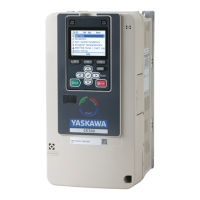
